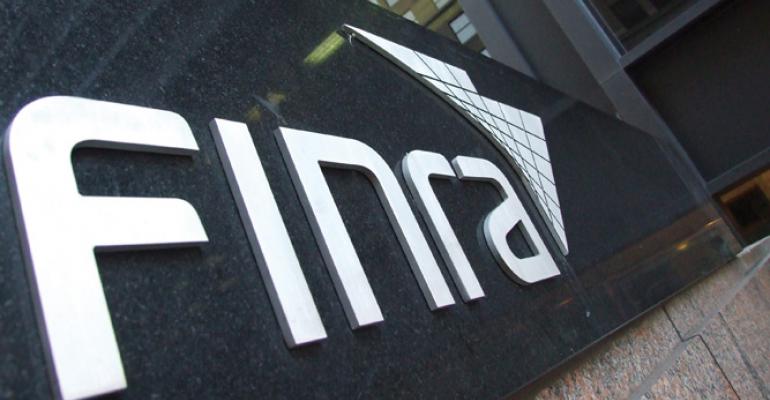Ask an industry vet about their compliance department and you will hear many colorful euphemisms used as definitions: “Business Prevention Unit.” “Department of No.” Humor aside, it is this thinking that immediately disintermediates a fairly sophisticated group that could be a significant resource in asset and revenue generation. You can hear the collective scoffs from your desk, but it is true. When resources are the tightest, you should be considering how to leverage your compliance group, not limit its reach. Compliance departments are made up of experienced industry experts who have proficiency in understanding a significant number of complex strategies and products. Use this knowledge; don’t alienate it!
FINRA and, in part, the SEC, tried to do what they thought would help: They regulated the Chief Compliance Officer into existence in the early 2000s, and then regulated mandatory annual meetings between the CCO and the CEO. This helped two kinds of firms: those that already leveraged the CCO as a senior executive, and those that didn’t realize that CCOs could be resources at all. The vast majority of financial firms simply looked at CCO regulation as one more control over how they operated. Not to be dissuaded, FINRA has recently furthered their goal of propelling compliance into the boardroom through their plan to “audit” firms’ compliance cultures.
The ongoing goal of the regulators is to get compliance to a broker/dealer’s decision-making table. Say what you will about the process to get there, but leveraging compliance to be a deeper part of a successful management team is an area that firms and regulators should agree on. Here’s how to utilize and develop the compliance group to be a high-functioning resource in your firm, without the messy law-making:
- Make compliance a business line.
Business lines in your firm may be broken out by function (capital markets, wealth management and banking) or by region, but there is always an individual responsible for the development of their area or region. Designating a leader should be your task with compliance as well. Place a responsibility on your compliance leader to develop an annual plan showing how they will bring the business heads together to help them safely increase revenue. Whether the challenge is business development, product creation or trading strategy, there are ways to do anything correctly, and within the guidelines of SEC and FINRA rules. Make sure that your compliance group understands that it should to do everything in its control to keep the firm compliant and to create safe solutions for its partners in the business.
- Motivate compliance to manage risk.
Many people misinterpret managing risk with implementing compliance. While the two goals are linked (compliance is part of the risk management chain), the autonomy and responsibility that come with managing risk are of greater value. Regrettably, senior management often confuses these concepts. In the confusion of roles, your compliance department can be accidentally encouraged to give a reflexive “No” whenever new or different business is presented. No one likes saying “No”, but if compensation and job responsibilities are aligned with eliminating, not managing, risk, what is the upside of a “Yes”? Leaders should show the compliance department that when a “No” is required, a bare negative is never an appropriate answer. Sometimes a “No” requires educating a representative or trader; other times, a “No” requires leading the representative through the process of understanding a larger end goal. “No” alone isn’t the right answer in most cases. “No, but…” is.
- Reconcile your compliance culture to reality.
This point is less about your compliance staff and more about you and your board members. Culture in any firm is distilled, not demanded. If your firm demands a culture of ethics and compliance, then a compliance officer’s role soon becomes educating and assisting, not being a cop and judge. See http://wealthmanagement.com/regulation-compliance/finra-now-playing-culture-cop to assess your own firm’s culture.
- Do you have the right person in the job?
Finally, a firm must ask, “Do I have the right person in the compliance role?” Ensuring you are fully leveraging your compliance staff is paramount, but sometimes a poor fit just occurs. The poor fit can be based on a mismatch in management styles or expectations, business line exposure or general industry experiences of the individual. The approaches and methods of each person determine how cohesive a management team will be, and compliance is no different. Compliance is a specialty department in financial industry firms. Each firm, in turn, has its own specialty or business niche in the marketplace. Firms must focus on the compliance resources that make it better, but also more efficient. Like finding great producers, getting the right compliance fit means being patient and talking to lots of great compliance talent.
Compliance personnel, as in other departments, vary in personality and drive. But, generally speaking, your compliance group has the deepest knowledge in significantly varied businesses. Compliance staff evaluate successful producers at a human level and can provide insight that sales metrics cannot capture. Compliance is an abundance of business intelligence that is often untapped. Does your firm want to get the most out of all of its resources? Leverage your compliance staff to build a better business. They’re just waiting to be asked.
Matthew Reynolds is the Chief Operating & Compliance Officer at Chicago-based financial services firm Noyes and its subsidiaries David A. Noyes & Company, Member FINRA, and Noyes Advisors, LLC, a registered investment advisor with the SEC.
DISCLAIMER - http://www.danoyes.com/disclaimer/





